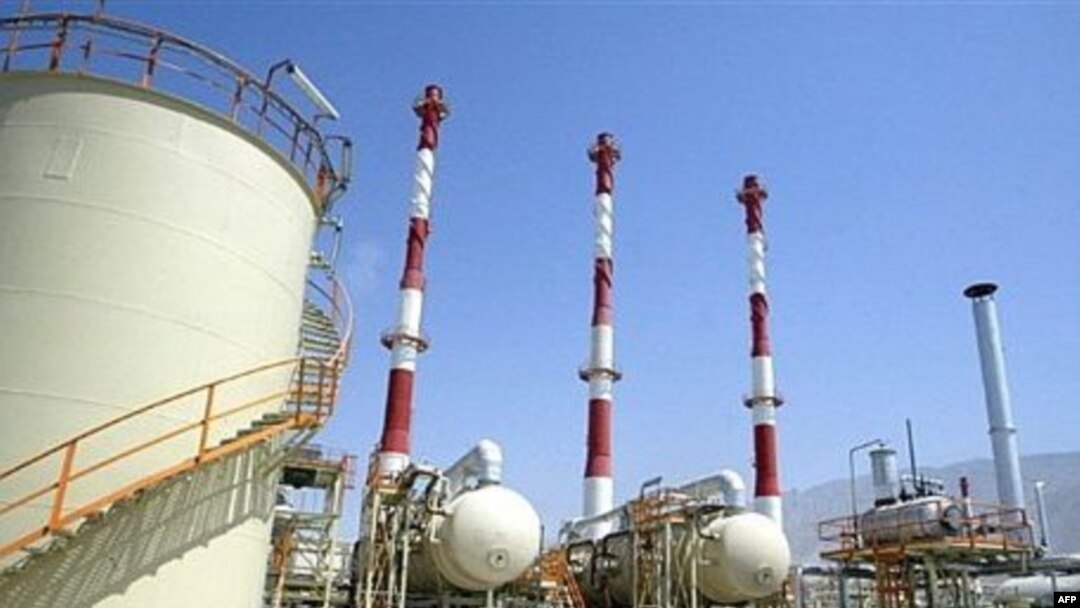Despite strong misgivings from the United States, which hopes to prevent any investments into Iran's energy sector until the issue of its nuclear program is resolved, Turkey took a step closer to its goal of becoming a major "energy bridge" for oil and gas supplies from the former Soviet Union and Iran to Europe.
NATO-member Turkey hopes its energy bridge will not only speed up its membership in the European Union -- a goal of Turkish policy since 1959 -- but will also reassert its dominance in the region.
The country is well on its way to achieving the second goal, if not the first.
Blue Stream To Ankara
The Blue Stream gas pipeline from Russia was the first major step in this direction. Blue Stream comprises a 357-kilometer section in Russia from Izobilnoye to Dzhubga on the Black Sea Coast, through a 378-kilometer section along the bottom of the Black Sea, to Samsun on the Turkish coast. From there, a 483-kilometer link will take the gas to Ankara.
By 2010, Blue Stream is expected to deliver 16 billion cubic meters of gas annually to Turkey.
And while the current volume of gas going through this pipeline was at times far less than anticipated due to Turkish authorities' overestimation of future demand and a pricing dispute with Gazprom, the pipeline can supply gas to other European and possibly U.S. customers in the future.
Turkey consumes 22.6 billion cubic meters of gas a year. More than 67 percent of it comes from Russia; the rest arrives in the form of liquefied natural gas (LNG) via tanker from Algeria and Nigeria and by pipeline from Iran.
One attractive project being explored is a potential LNG liquefaction terminal in Ceyhan to export Russian gas to Europe and the United States.
The Baku-Tbilisi-Ceyhan (BTC) pipeline, which delivers some 1 million barrels of Azerbaijani oil per day to the Turkish port of Ceyhan, considerably raised Turkey's standings as a transit center for oil. What makes the BTC pipeline attractive is that it bypasses Russian territory, an important consideration for Western consumers wanting to diversify their energy sources.
Iraq is preparing to resume oil shipments via Turkey. A pipeline with a daily 500,000-barrel throughput capacity was completed recently and is undergoing final tests, Iraqi Oil Minister Husayn al-Shahristani announced on August 21. A special security force numbering thousands is being deployed to guard the network, al-Shahristani told Reuters.
Overly Ambitious?
Turkey's energy bridge plans come with a potential downside.
As the EU continues to develop new sources of gas supplies in order to lessen its dependence upon Russian gas, Turkey might find its gas-transit plans to be overextended and unrealistic in the short term.
EU plans to lower imports of Russian gas from the current 150 billion cubic meters annually to about 50 billion by 2010 will undercut Russian and Turkish projects such as Blue Stream -- as well as multibillion-dollar pipeline projects such as Nord Stream (linking Russia and Germany via the Baltic seabed) and South Stream (linking Russia and Bulgaria via the Black Sea).
U.S. opposition to Turkey's involvement in the South Pars project is unlikely to end in the near future unless Iran has a change of heart and agrees to abandon its uranium-enrichment program.
But in the long run, the planned alternative gas suppliers to the EU --including Azerbaijan, Algeria, and Norway -- might not be able to sustain such large volumes of production, and the EU will be forced to either cut back on gas consumption or return to Russia for its gas supplies.
Potentially, the most viable source of non-Russian gas for the EU in the region is Iran, and will remain so for decades. Whether those in power in Tehran would abandon their dreams of joining the nuclear arms club in exchange for closer energy ties with Europe appears doubtful at this time.
U.S. Eyes Alternative Supplies
Adding to the complexity of the situation is the coming gas shortage in the United States. With consumption overtaking both production and current imports, the United States too will be forced to turn to Russia, Qatar, and possibly Iran for LNG in a few years.
How much gas will be left for EU consumers once the United States joins the LNG queue is unclear, but it is obvious that the current supplies have limits.
By the end of the decade, Turkey's role as both an energy bridge and a liquefaction hub for Russian and Iranian LNG shipments will enhance its status and geopolitical importance.
How this will affect the country's politics, its role in NATO, and the rise of domestic Turkish Islamist groups will surely be watched closely by the EU, Russia, and the United States.
An OPEC For Natural Gas?
COMING TOGETHER? PFC energy analyst Nikos Tsafos and RFE/RL energy analyst Roman Kupchinsky discussed with an RFE/RL briefing what the likelihood is of a natural-gas-producers consortium being formed and what such an organization might look like.
LISTEN
Listen to the entire briefing (about 70 minutes):
RELATED ARTICLES
Vision Of Global Gas Cartel Gains Clarity
Putin To Take His Message To The Persian Gulf
Iranian Politicians Support Establishment Of Natural-Gas Cartel


